Related Research Articles

Greenville is a village and census-designated place (CDP) in the town of Smithfield in Providence County, Rhode Island, United States. The population was 8,658 at the 2010 census. The CDP is centered on the village of Greenville but also encompasses the nearby villages of West Greenville and Spragueville, as well as the Mountaindale Reservoir and beach.

Johnston is a town in Providence County, Rhode Island, United States. The population was 29,568 at the 2020 census. Johnston is the site of the Clemence Irons House (1691), a stone-ender museum, and the only landfill in Rhode Island. Incorporated on March 6, 1759, Johnston was named for the colonial attorney general, Augustus Johnston.

North Smithfield is a town in Providence County, Rhode Island, United States, settled as a farming community in 1666 and incorporated into its present form in 1871. North Smithfield includes the historic villages of Forestdale, Primrose, Waterford, Branch Village, Union Village, Park Square, and Slatersville. The population was 12,588 at the 2020 census.

Fiskeville is a small village in the south west corner of Cranston, Rhode Island, United States, the south east corner of the Town of Scituate, Rhode Island and across the northern side of Coventry, Rhode Island. The village's Main Street forms the border between Cranston and Scituate. Fiskeville grew up as one of several mill towns along the Pawtuxet River in the mid-1800s. The Fiskeville textile mill was formed by Dr. Caleb Fiske, a Revolutionary War doctor turned businessman in 1812. The village became home to those who worked in the mill, mostly immigrants from Portugal, France, Italy and England. Fiskeville is usually associated with Cranston rather than with Scituate as most of the original buildings including Dr. Fiske's residence were in Cranston. Although the mill and about a dozen nearby mill houses were in Scituate. Poets Karen Haskell and Darcie Dennigan both grew up, a few doors down from each other, in the 1970s and 1980s on Main Street in Fiskeville.

Thornton is a neighborhood located in the north-west part of Cranston, Rhode Island on the Johnston line and extends into the Johnston side.
Rhode Island Locomotive Works was a steam locomotive manufacturing company in Providence, Rhode Island. The factory produced more than 3,400 locomotives between 1867 and 1906, when the plant's locomotive production was shut down. At its peak, the locomotive works employed about 1,400 men who could produce some 250 locomotives a year.

Hillsgrove, originally Hill's Grove, is a village in western central Warwick, Rhode Island.
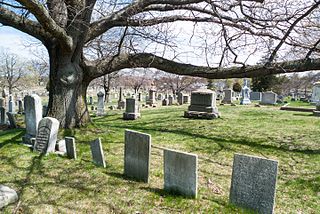
The North Burial Ground is a 110-acre (0.45 km2) cemetery in Providence, Rhode Island dating to 1700, the first public cemetery in Providence. It is located north of downtown Providence, bounded by North Main Street, Branch Avenue, the Moshassuck River, and Cemetery Street. Its main entrance is at the junction of Branch and North Main. The burial ground is one of the larger municipal cemeteries in Southern New England, and it accepts 220 to 225 burials per year.

Blackstone is a predominantly residential neighborhood in Providence, Rhode Island. It is in the northeast corner of the city and is bounded to the south and west by Lloyd Avenue and Hope Street respectively. It is one of six neighborhoods comprising the East Side of Providence.

The Rhode Island Historical Society is a privately endowed membership organization, founded in 1822, dedicated to collecting, preserving, and sharing the history of Rhode Island. Its offices are located in Providence, Rhode Island.
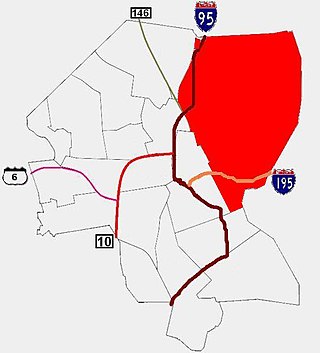
The East Side is a collection of neighborhoods in the eastern part of the city of Providence, Rhode Island. It officially comprises the neighborhoods of Blackstone, Hope, Mount Hope, College Hill, Wayland, and Fox Point.
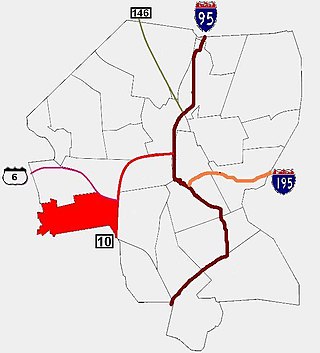
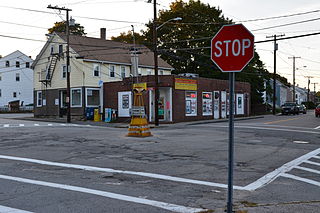
Albion is a village and historic district in Lincoln, Rhode Island, in the United States.
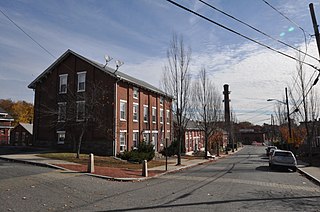
Lonsdale is a village and historic district in Lincoln and Cumberland, Providence County, Rhode Island, United States, near Rhode Island Route 146 and Route 95. The village was originally part of the town of Smithfield until Lincoln was created in the 1870s, and was originally centered on the Lincoln side of the Blackstone River. William Blaxton settled in the area in 1635. In the nineteenth and early twentieth centuries, Lonsdale was home to several manufacturers including the Lonsdale Company's Bleachery, and the Ann & Hope mill was also located in the village in Cumberland.
Gregory Dexter was a renowned printer of important and controversial books and pamphlets in London. In New England, he assumed various roles including serving as a consultant to printers, a Baptist minister, an owner of a limestone quarry, and a political figure elected as president of the combined towns of Providence and Warwick in colonial Rhode Island. He is best known as the printer of Roger Williams's book A Key into the Language of America in 1643, the first English translation of a Native American language.

William R. Walker & Son was an American architectural firm in Providence, Rhode Island, active during the years 1881 to 1936. It included partners William Russell Walker (1830–1905), William Howard Walker (1856–1922) and later William Russell Walker II (1884–1936).

The United Baptist Church, John Clarke Memorial is a historic Baptist church in Newport, Rhode Island, USA that was founded in 1638–1644. It is one of the two oldest Baptist congregations in the United States and is currently affiliated with the American Baptist Churches USA. The current meeting house of the church was constructed in 1846.
Timeline of Newport, Rhode Island.
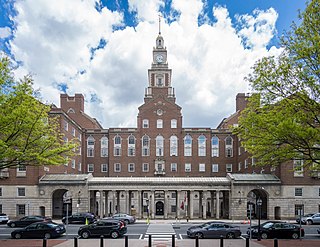
Jackson, Robertson & Adams was an architectural firm out of Providence, Rhode Island. Established in 1912, it was originally made up of architects F. Ellis Jackson (1879–1950), Wayland T. Robertson (1873–1935), and J. Howard Adams (1876–1924).
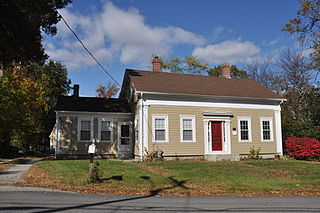
Hughesdale is a neighborhood in the town of Johnston, Rhode Island. Hughesdale is a primarily residential neighborhood in the southeast corner of the town, centered near Central Avenue and Atwood Avenue. It is situated near the villages of Simmonsville and Thornton.
References
- ↑ Society, Johnston Historical. "Johnston Historical Society -- Timeline of Johnston History". www.quahog.org.
- ↑ Louis H. McGowan, Johnston - Volume 1 - (Johnson Historical Society - 1997) pg. 48
- ↑ A geographic dictionary of Rhode Island, Issues 107-117 by Henry Gannett
- ↑ Inventory of the church archives of Rhode Island: Baptist, The Historical records survey, 1941
- ↑ Johnston, Rhode Island, Volume 2 By Johnston Historical Society (Johnston Historical Society, Arcadia Publishing, Mar 28, 1999)
